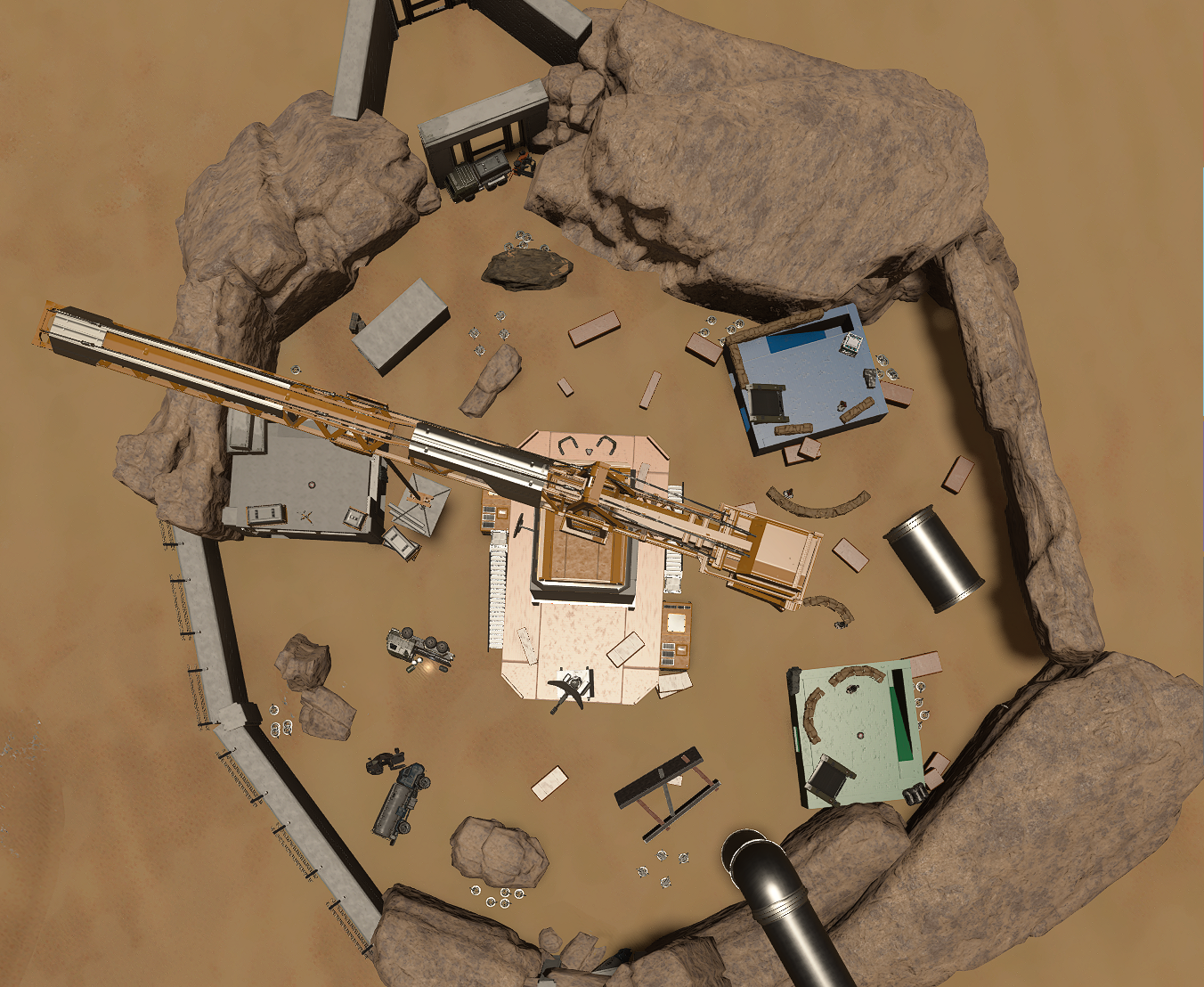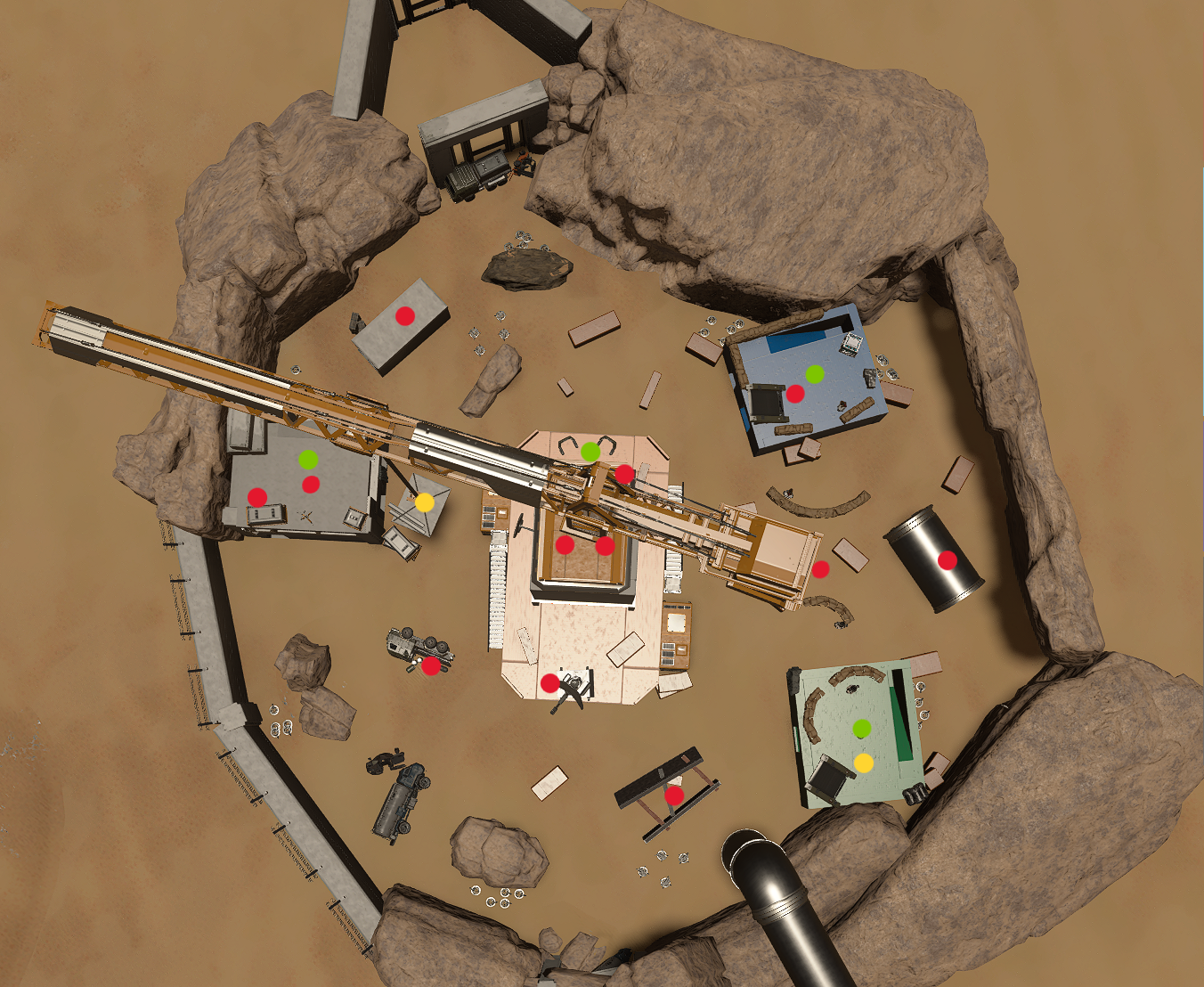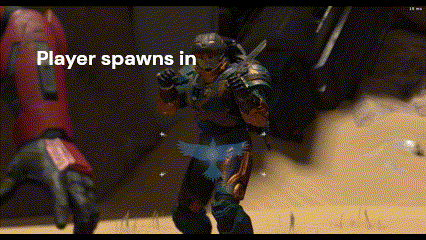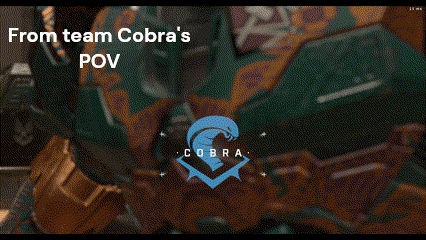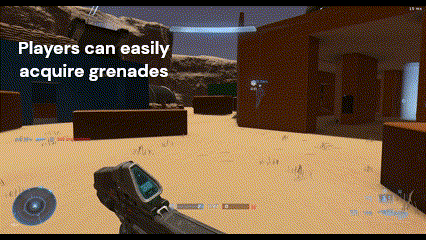Training Exercise
Type of Project: Personal Solo Role: Level Designer Size: Independent Duration: 8 weeks Year Created: Early 2024 Software: Halo Infinite Forge
Overview
This was a passion project that I decided to start on the last day of winter break of junior year where I started working on this map and spent 8 hours on it. Got bots to be functional and kept working on it till it was playtested with real users and ready to be published. It is my first official multiplayer PVP map and I had a lot of fun working on it. This map was partially a continuation of a map I had tried to make earlier I then pivoted to a different style of map and game mode as my original idea was to create a tactical slayer-only map. I decided against it as I wanted to challenge myself to make a map in a mode I was not super good at as a player and I wanted to be able to utilize equipment and weapon spawners on this map as well.
Planning
This map started as only walls, since it was a personal project I started my process a little different from what I usually do which was decorating and creating the bounds of the map with environmental theming. I was having a lot of fun with the idea of a forwarding base that UNSC troops used on the desert portions of a Halo ring and decided to stop construction on the would-be training area and use it for running spartan squad training exercises despite its half-finished state.
For the map details itself, I loosely used the project spec from a prior level design class to dictate the conditions of my map. Those specs were to make a 2v2 slayer or 4-person FFA map. I decided to move away from those specs slightly and make a 6-person FFA map with the capability of a 3v3 Slayer to try working with a larger map than the original assignment spec would cater towards. Early on I defined the weapon types, grenades, and equipment that would be present on the map. Then drew up a rough layout plan for the different areas of the map. I made sure to plan for 3 distinct areas to be used as callouts once the map was complete. Additionally, I planned for this map to be short to medium range to ensure the map would properly support 3v3 or 6 person FFA.
Planning and Playtest Documents
FFA Slayer Playtest
3v3 Slayer Playtest
Lanes and Map Flow
My goal for this map was to create a map built to encourage short to medium-range combat but support long-range. In turn, I wanted this map to support free-for-all primarily but fast-paced team deathmatch as well. To do that I chose a lane layout of an inner and outer circle with a grid connecting them. The reason being was to enable players to easily rotate to any point of the map and mitigate the chance of players getting stuck in corners. I wanted to make sure each building had at least 3 entrances and exits whether those were doors or windows players could jump through. I wanted the time to engagement for players to be roughly 2-3 seconds regardless of the game mode to create the crazy fast-paced combat that maps like Shipment and Rust in Call of Duty create.
As seen in the above-left image, for team Slayer I offset Eagle and Cobra spawns (highlighted dots) to be diagonal to each other with cover but still giving teams several different lanes to move through. The starting spawns don’t limit the players to those 3 routes, players can also choose to go on the outside lane towards the gray, blue, or green building depending on their spawn as there are windows and doorways to allow players to rotate to the outer circular lane.
I made sure that the spawns present for 3v3 would prevent players from being able to predict where the enemy team would spawn. I did this by making every spawn accessible to each team with the caveat that in the forge the map would prioritize the side the team started on to spawn. Making it where Eagle and Cobra had dedicated spawns but in the case the enemy was on Cobra's side, that team could spawn at Eagle. This way players are constantly guessing where the enemy is going to come from, preventing spawn camping. Every spawn within the map allows players to have a minimum of two paths they could take to ensure player agency is being exercised and strategy within matches.
When playing in FFA all spawns including a couple extra on the outskirts are included allowing players to come from all points of the map to reduce time to engage and to prevent spawn camping in an FFA setting.
Equipment and Weapon Placement
I placed the weapons along the lanes of the map for easy access to the different weapons in the map.
Weapons were placed with initial spawns in mind allowing players to immediately grab a new weapon!
Likewise grenades were also placed with the lanes in mind to create ease of access.
Callouts and Supporting Team Play
In the early stages of map creation, I planned for there to be specific locations that players would be able to use as callouts to reinforce strategic gameplay and enhance map flow. I did this by use of color and visual attributes. As seen on the image to the left, I made each building have its own signifier to make it stand out from the rest. Construction/concrete building on the left, crane in the center, then blue and green buildings on the right. This way players can specifically point out to teammates where enemies are and easily memorize the map layout to get to their favorite weapons and positions.
Red Dot = Weapon | Green Dot = Grenade | Yellow Dot = Equipment
Playtesting and Iteration
Eventually, my level reached a point where I put it out to be played by various groups of people. I playtested this map with multiple users around 7 times in various modes. Above in my planning section, you can see two recorded playtests of the map in each respective mode. In the playtesting stage, not many changes were made without a test being executed first. User feedback, suggestions, and my findings were the main driving forces in my decisions when making changes.
For example, I found myself not having any power weapons on the map and for a while, I thought that was fine and didn’t go against the goals of my map. However, after testing with multiple parties, players said the map would be even more engaging if there was a power weapon to fight over. Afterward, I added the skewer and the hydra on each side of the map in open areas for players to fight over. As time passed, I found that players would often go to those zones, whether in FFA or team slayer, to get the power weapon. I made the weapons fit within preexisting lanes to optimize map flow and satisfy player desires.
Overall once playtesting started the progression of the map was straightforward as user feedback was inspiring me to make changes and my own observations helped me to massage out issues that the map had that I hadn’t seen before in my testing with only bots.
FFA Slayer Playtest
3v3 Slayer Playtest
Ending Notes
Learning Outcomes
I learned that when working on a personal project to bring people in sooner. The more eyes that can get on a project, especially with a multiplayer one, the better it will do. It was odd for me to feel hesitant with the project when every other project I had worked on I had no issue throwing it to the metaphorical wolves but this one I did. I am happy I had that experience because it pushed me out of my comfort zone with a project that was close to self which only made me a better designer. Being able to let go of your own fears when it comes to projects, whether personal or professional (or a mix of both), enables you to enter into a place that allows you to surpass what you thought was possible in your own works.
On a less philosophical note, I also learned through this project that I was able to go through the workflow of making a successful player map of decent size. I was able to translate my workflow from single-player and non-FPS-style games to this project to make a map that users enjoyed playing on in multiple modes. Moreover this project helped me overcome some unseen issues I had as a designer and prove my competence in PVP map design.
Complications/Issues
The primary complications I had were parsing through feedback from testers and dictating which feedback aligned with the experience I wanted players to have. As well as the issue that players found the map worked better as a FFA map. I decided to lean into that and make it primarily an FFA map since the layout worked better for that type of gameplay. But I also tried to make it a balanced experience for players when in 3v3 team slayer, and according to playtest feedback that was generally achieved. I also found myself in the early stages wanting to shy away from playtesting.
This project was a personal one, so I naturally had a bit of an attachment to it. I thought this map was awesome and I even enjoyed playing on it with bots for fun. Which made me hesitant to show it to other people. But once I did, I was happy I trusted my instructors and my gut instinct since the feedback I received made this map better in every way to its original self. Albeit through small tweaks and changes, that makes a product go from good to great.



